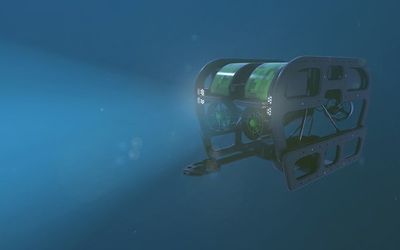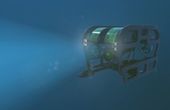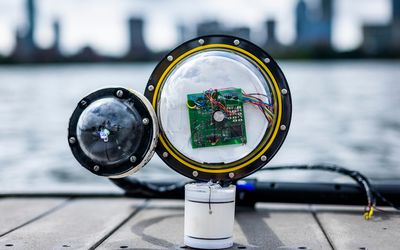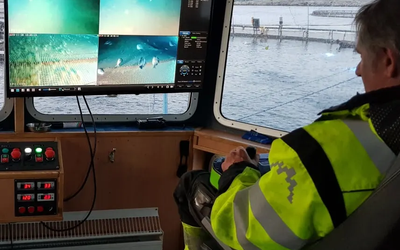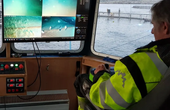Teredo IceShuttle for Through-Ice Cap Transmission
An ice shuttle and base station for transmission through ice caps.
Technical Specifications
| Size | 0.28 m (diameter) x 6.75m (approx) |
| Actuators | Thermal drill |
| Thermal Power | 3.6 kW ice-melting tip |
| Drilling Rate (Speed) | 0.8 m/h |
Overview
Thermal Drill-Based Propulsion Through Ice
The Teredo IceShuttle penetrates through the ice sheets thanks to a thermal drill. This drill generates the propulsion needed to break through the ice, delivering a payload underneath the ice sheets. It features a 3.6 kW thermal drill that has a thermal tip that can melt the ice.
The tip comprises six cartridge heaters having a power of 600 watts each. The thermal drill can drill up to 0.8 meters per hour.
Moreover, it features a heatable hull that supports the movement through thick ice sheets. The hull ensures that the IceShuttle stays well heated, which enables it to prevent being stuck.
Additionally, an ice anchor keeps the Teredo IceShuttle in one stationary position, enabling it to work as a base station for communication and payload transfer.
Docking Interface With Supporting Mechanism
The docking interface offers a mechanism to transfer energy and payloads when the IceShuttle is stationary. Moreover, a network of sensors supports the interface, ensuring smooth and accurate underwater navigation. The wide range of sensors includes:
Evologics S2CR 48/78 USBL - An underwater acoustic positioning system commonly used in remotely operated vehicles and autonomous underwater vehicles that tracks and positions underwater targets. It works in real-time thanks to acoustic signals at an optimal range of 48 to 78 kHz offering high accuracy and robust performance in tough-to-navigate underwater regions.
RJE International ULB-350 Acoustic Beacon - A device for underwater recovery and tracking that works on acoustic signals. It can be detected by SONAR systems, enabling it to detect hidden vehicles and underwater objects. It features a long-lasting battery and is commonly used in several maritime applications.
Sea & Sun Marine Teh SV48-6000 CTD Sensor - A specialized sensor for oceanographic parameter measurement. It provides conductivity, temperature, and depth readings at high precision and accuracy. It, therefore, has several applications in environmental monitoring and research.
Rotatable Excentric Axis Modules for Smooth Propulsion and Movement
The Teredo IceShuttle also features a couple of modules that can rotate around an eccentric axis. It enables the shuttle to execute multiple functions such as propulsion, deployment, and launch of the vehicle. Moreover, it aids in the recovery of the vehicle and sensor set deployment.
Thanks to a rigid and supportive body, the Teredo IceShuttle boasts a wide range of applications for search and rescue, research, and signal transmission applications.



